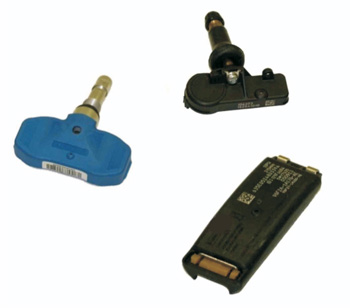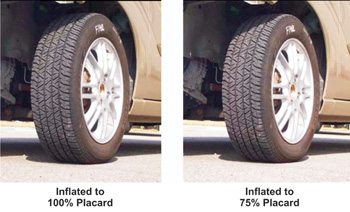By Scot A. Holloway
General Manger, Bartec USA, LLC
What do you think when you hear TPMS? The acronym for Tire Pressure Monitoring Systems typically invokes less than favorable responses (and facial expressions). By now however, most are reconciled to the fact that TPMS is here to stay. 
As many have already faced the “now what?” moment, it’s time for the automotive aftermarket to do what it does best….embrace the technology and provide the best service to their customers!
Today, a majority of vehicles use Direct Tire Pressure Monitoring Systems (TPMS) which incorporates a number of components including wheel sensors, an antenna, a receiver and a control module.
The wheel sensors are located inside the wheel and tire assembly. The TPMS sensor is usually part of or attached to the valve stem. In some models, the TPMS sensor is banded to the drop center. In either case, the sensors work in a similar manner.
Complete with a processor, power supply and a transmitter, these “miniature computers” sample pressure and temperature inside the wheel and then periodically transmit the data back to the vehicle’s receiver.
Once received, the data is decoded and processed by a control module. When a low pressure condition is detected a warning indication is made on the instrument panel. Some vehicles have a warning light, others display pressure.
All vehicles must indicate a warning when pressure is low. Typically a solid light is a pressure problem and a flashing light is indicative of a system problem.
Why TPMS?
The National Highway Traffic Safety Administration (NHSTA) concluded from its studies on vehicle tires in the 1990s that many drivers do not regularly check their tire pressure.
There are many factors to consider with a low tire pressure situation, not least of which is safety.
Underinflated tires roll at higher temperatures, handle poorly and require longer vehicle stopping distances. Underinflated tires also reduce gas mileage.
There are also economic factors. As fuel prices rise, it becomes increasingly important to do everything possible to increase vehicle gas mileage. Properly inflated tires help get better fuel economy.
Finally, properly maintained tire pressure maximizes tire life. The reality is that properly inflated tires monitored by a properly maintained TPMS helps to make the vehicle safer and save the consumers money.
Since it is believed that the TPMS (including the sensors) may last as long or longer than three sets of tires, the value to maintaining them is high and will save the consumer considerable operating cost over the life of the vehicle.
Knowledge is power
TPMS can be complex and there is plenty of information (and mis-information) available. The internet is full of sources for TPMS research.
When searching TPMS or Tire Pressure Monitoring Systems, you can learn what tools are required and how they work.
There are mechanical tools like torque wrenches, valve core tools, and grommet tools. There are also electronic tools to test the sensors and reprogram the vehicle.
It is important to note that the cheapest tool isn’t always the best solution, especially when you consider the complexity of the repair process.
Many vehicles require an OBD connection to complete a TPMS re-learn. This requires an electronic tool that has been engineered and tested thoroughly and more importantly is easy to operate.
If the TPMS tool adds confusion or creates problems, the technician will end up spending more time than necessary on the repair, or worse not be able to complete the repair at all.
Arming yourself with the right tools isn’t always enough. A fundamental understanding the sensor’s function and vehicle applications goes along way in troubleshooting TPMS issues.
It is important that you have access to the very best in training and technical support. Align yourself with resources that provide training, technical support, answer tough TPMS questions and assist your technicians through difficult TPMS problems.


